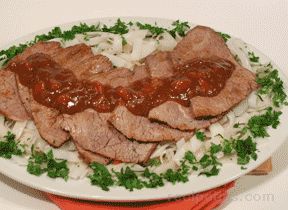"Eating Right: Simple Nutrition Strategies for a Balanced Diet"
Achieving a balanced diet is essential for maintaining overall health and well-being. While the concept of a balanced diet can seem complex, it’s actually quite manageable with some straightforward strategies. By focusing on a variety of nutrient-dense foods and adopting mindful eating habits, you can nourish your body and support long-term health.

1. Understand the Basics of a Balanced Diet
A balanced diet includes a variety of foods that provide essential nutrients, including:
- Carbohydrates: Whole grains, fruits, and vegetables.
- Proteins: Lean meats, poultry, fish, beans, and legumes.
- Fats: Healthy fats from avocados, nuts, seeds, and olive oil.
- Vitamins and Minerals: A diverse range of fruits and vegetables to ensure adequate intake of essential micronutrients.
Aim to include all these components in your meals to support overall health and energy levels.
2. Choose Whole, Unprocessed Foods
Whole foods, such as fruits, vegetables, whole grains, and lean proteins, offer the most nutritional value. They are rich in vitamins, minerals, and fiber, and generally contain fewer added sugars, unhealthy fats, and preservatives compared to processed foods. Focus on incorporating fresh, minimally processed foods into your diet to maximize your nutritional intake.
3. Portion Control
Portion control is crucial for managing calorie intake and maintaining a healthy weight. Pay attention to portion sizes, especially with calorie-dense foods like nuts, oils, and cheeses. Use smaller plates and bowls to help control portions and avoid overeating. Listening to your body’s hunger and fullness cues can also help regulate portion sizes.
4. Incorporate a Variety of Colors
Eating a colorful variety of fruits and vegetables ensures you’re getting a wide range of nutrients. Different colors often represent different vitamins, minerals, and antioxidants. For example:
- Red and Orange: Rich in vitamin C and beta-carotene (e.g., bell peppers, carrots, tomatoes).
- Green: High in vitamins A and K and folate (e.g., spinach, kale, broccoli).
- Blue and Purple: Packed with antioxidants like anthocyanins (e.g., blueberries, eggplant).
Aim to include a rainbow of colors on your plate to boost your nutrient intake.
5. Include Lean Proteins
Proteins are essential for muscle repair, immune function, and overall health. Opt for lean protein sources such as:
- Poultry: Chicken or turkey.
- Fish: Salmon, tuna, and other fatty fish rich in omega-3 fatty acids.
- Legumes: Beans, lentils, and chickpeas.
- Nuts and Seeds: Almonds, chia seeds, and hemp seeds.
Incorporating a variety of protein sources can help you meet your nutritional needs and support muscle maintenance.
6. Focus on Healthy Fats
Not all fats are created equal. Focus on incorporating healthy fats into your diet, which are beneficial for heart health and overall well-being. Sources of healthy fats include:
- Avocados: Rich in monounsaturated fats and fiber.
- Nuts and Seeds: Provide omega-3 fatty acids and other essential nutrients.
- Olive Oil: Contains heart-healthy monounsaturated fats.
Limit saturated and trans fats found in fried foods, baked goods, and processed snacks.
7. Stay Hydrated
Water is vital for maintaining bodily functions and overall health. Aim to drink at least 8 glasses of water a day, or more if you’re active or live in a hot climate. Hydration also supports digestion and helps maintain energy levels. Herbal teas and water-rich foods like cucumbers and melons can also contribute to your daily fluid intake.
8. Limit Added Sugars and Sodium
Excessive added sugars and sodium can contribute to various health issues, including high blood pressure and weight gain. Reduce your intake of sugary beverages, sweets, and processed foods high in sodium. Opt for natural sweeteners like fruit and flavor your dishes with herbs and spices instead of salt.
9. Plan Your Meals
Meal planning can help you make healthier choices and avoid the temptation of fast food or convenience snacks. Spend some time each week planning your meals and snacks, and prepare healthy options in advance. Having a meal plan helps ensure you have nutritious foods readily available and can help you maintain portion control.
10. Practice Mindful Eating
Mindful eating involves paying attention to your hunger and fullness cues, eating slowly, and savoring each bite. Avoid distractions like watching TV or scrolling through your phone while eating. By focusing on your food, you can better enjoy your meals, recognize when you’re full, and prevent overeating.
11. Moderation, Not Perfection
It’s important to remember that no one is perfect when it comes to eating. Allow yourself occasional treats and indulgences without guilt. The key is to maintain a balance and focus on overall dietary patterns rather than individual food choices. Moderation helps you sustain healthy eating habits over the long term.
Conclusion
Eating right for a balanced diet doesn’t have to be complicated. By focusing on whole foods, practicing portion control, incorporating a variety of nutrients, and staying hydrated, you can support your overall health and well-being. Remember, consistency and mindfulness are key to making sustainable changes and enjoying the benefits of a balanced diet.
What's Your Reaction?






















































































